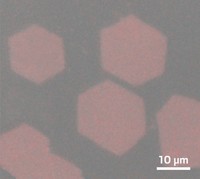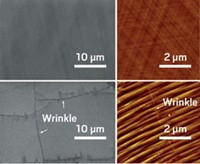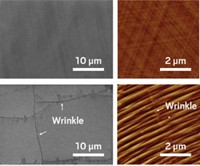Advertisement
Grab your lab coat. Let's get started
Welcome!
Welcome!
Create an account below to get 6 C&EN articles per month, receive newsletters and more - all free.
It seems this is your first time logging in online. Please enter the following information to continue.
As an ACS member you automatically get access to this site. All we need is few more details to create your reading experience.
Not you? Sign in with a different account.
Not you? Sign in with a different account.
ERROR 1
ERROR 1
ERROR 2
ERROR 2
ERROR 2
ERROR 2
ERROR 2
Password and Confirm password must match.
If you have an ACS member number, please enter it here so we can link this account to your membership. (optional)
ERROR 2
ACS values your privacy. By submitting your information, you are gaining access to C&EN and subscribing to our weekly newsletter. We use the information you provide to make your reading experience better, and we will never sell your data to third party members.
Materials
Graphene's Electronic Limits Revealed
March 31, 2008
| A version of this story appeared in
Volume 86, Issue 13
Physicists at the University of Maryland have thoroughly probed the conductivity of graphene—a single-atom-thick sheet of graphite—and measured key parameters that for the first time give a complete picture of the current limitations and future promise of the recently discovered electronic material (Nat. Nanotechnol., DOI: 10.1038/nnano.2008.58). Jian-Hao Chen, Michael S. Fuhrer, and coworkers report values for the resistivity (resistance to electron flow) and mobility (how fast electrons move) of graphene samples on a silicon dioxide substrate. But because graphene is just a single layer of carbon atoms, the researchers found that its very low resistivity and very high mobility are impacted by electronic interactions not only within the graphene layer but also with the substrate beneath. They anticipate that with better sample preparation techniques and less interactive substrates—silicon carbide and diamond are promising candidates—graphene's resistivity and mobility can be improved to near the material's room-temperature limits. The researchers showed that those values can surpass the low resistivity of silver and the high mobility of InSb, the current record holders, and put graphene's mobility about 100 times higher than that for silicon.





Join the conversation
Contact the reporter
Submit a Letter to the Editor for publication
Engage with us on Twitter